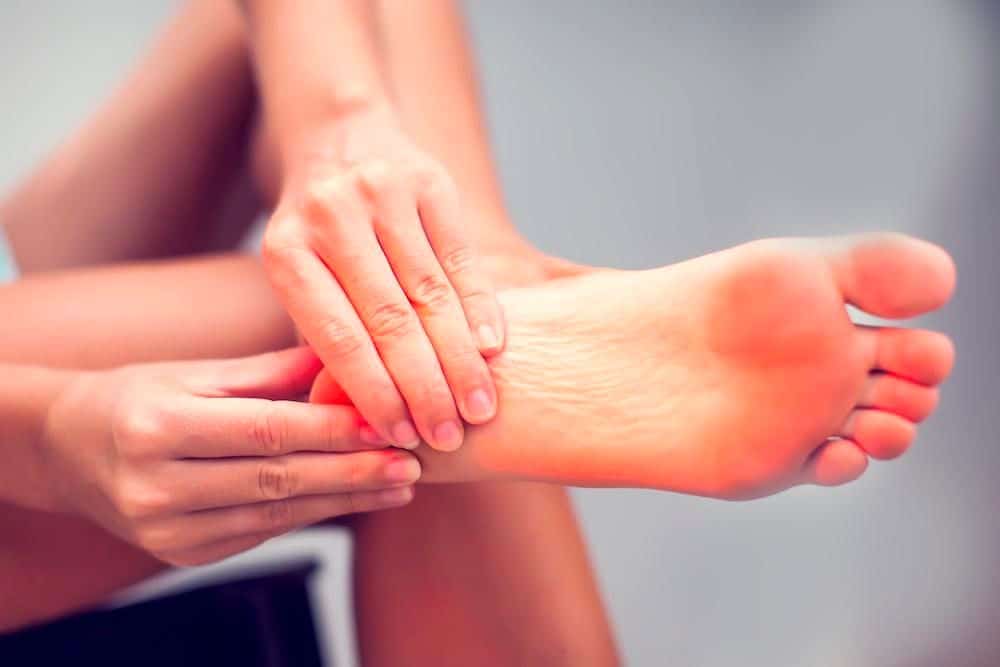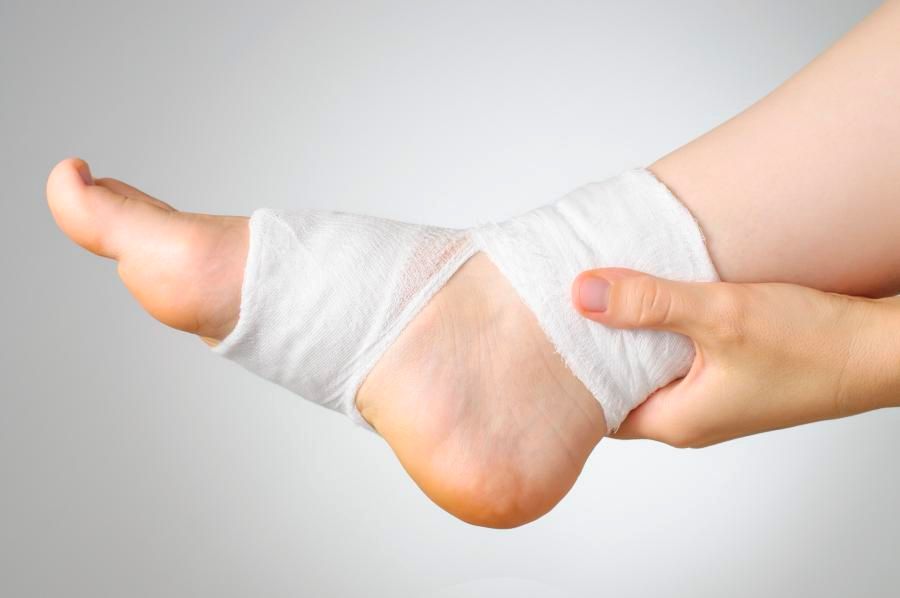Where can I seek ankle pain treatment Singapore? Where can I find more information about ankle pain diagnosis and ankle pain singapore?

(image source: https://www.sportsinjuryclinic.net/sport-injuries/ankle-pain)
The ankle is the joint where the lower leg bones and the foot bones meet. It is formed by the tibia (shin bone), fibula (calf bone), and talus (anklebone). Cartilage, ligaments, muscles, nerves, and blood vessels are all important parts of the ankle (Dwyer, 2009). The foot can turn inwards, outwards, and tilt to the side because of the flexibility provided by the ankle.
As we progress with our daily activities, there is a lot of pressure put on the ankle joint. Ankle pain is a common complaint in adult Singaporeans. Maintaining healthy ankles is crucial for several reasons, including injury prevention, improved mobility, posture alignment, and speedy recovery from injuries.
Our ankles support the weight of our entire body. Acute pain can usually be from injuries to the bone, joint, or tendons sustained during sports or activities. Chronic pain is usually atraumatic, and it may be a result of either ligament instability or tendon and joint issues with the ankle (Johns Hopkins Medicine, 2022). Ankle pain can be traced to 2 primary causes:
The following symptoms are associated with ankle pain. You may experience one or more of these, depending on the severity and the source of pain (Mayo Clinic, 2023).

(image source: https://www.cafootankle.com/blog/three-common-causes-of-heel-pain)
Some individuals have certain characteristics that increase the risk of developing ankle pain (Mayo Clinic, 2022). These risk factors include:
According to Ottawa Ankle Rules, those who have trouble standing on one leg are more likely to have an ankle fracture. If you have difficulties supporting your own weight after the injury, you should consult an orthopaedic surgeon right away. Depending on the cause, ankle pain is typically treatable.
Be sure to keep a record of your medical history. These can include allergies, previous surgeries, immunisations, and test results. This information will help your doctor gain insights into your current lifestyle and condition (OrthoInfo, 2020).
Ankle pain can be attributed to a wide range of causes. Your orthopaedic surgeon will provide a treatment plan that will be focused and targeted to the cause of pain (Cleveland Clinic, 2020).

(image source: https://www.footcarespecialists.com/blog/when-your-ankle-injury-may-require-surgery)
It all depends on the cause of ankle pain as detailed in the previous sections. Your orthopaedic surgeon will diagnose your condition and devise a treatment plan for your unique needs. There are various types of surgery that may be performed such as:
Your recovery and rehabilitation after surgery will depend on the specific procedure and nature of the surgery. In most patients undergoing ankle surgery, the estimated time to return to full activities is 2 to 3 months.

(image source: https://bmjtherapy.com/do-and-do-not-ankle-sprain/)
Adjusting your lifestyle can help you manage ankle pain and discomfort. This would include maintaining a healthy weight and taking precautions during physical activity. While on the mend from an injured joint, it is important to protect the ankle from further injury (Cleveland Clinic, 2020). Depending on the instruction of your orthopaedic surgeon, you can follow these steps:
Strategies to Avoid Ankle Injuries
If sprained ankles are already a problem for you, or you have never done regular balance and ankle exercises, visit a physiotherapist or podiatrist to provide initial advice on how to ensure you are doing these exercises correctly. Many podiatrists and physiotherapists can also provide sporting advice on specific exercises for an individual’s sport or training requirements.
The ankle joint bears weight, allows movement, and plays a significant role in our daily activities. Sprains, strains, osteoarthritis, and other medical conditions can contribute to ankle pain. There are instances that self-medication can lead to misdiagnosis which can exacerbate your condition. Since there is a multitude of factors to consider, it is best to seek medical advice from your orthopaedic surgeon. In Singapore, there are surgical and non-surgical methods to treat ankle pain. Your treatment plan may include orthotics, over-the-counter medicine, physiotherapy, minimally invasive techniques, or open surgery. Your orthopaedic surgeon will recommend the optimal solution for your unique needs.
· Acute pain can usually be from injuries to the bone, joint or tendons sustained during sports or activities. Chronic pain is usually atraumatic and a result of either ligament instability or tendon/joint issues with the ankle. Traumatic ankle pain is usually linked to ankle fractures and ankle sprains. Atraumatic ankle pain is mainly linked to tendinopathies of tendons around the ankle and cartilage issues including osteoarthritis.
Diagnosis typically involves a thorough medical history review, physical examination, and possibly imaging tests like X-rays or MRIs to determine the underlying cause of the pain.
You should consult an orthopaedic surgeon if you experience difficulty standing, significant swelling, or if the pain persists despite self-care measures.
· You may experience pain and swelling in the ankle area especially when doing chores, exercises, and other activities involving the lower extremities. Some may also feel mild to severe pain when walking, using stairs, or going up or down slopes. You may experience one or several of these symptoms, depending on the source of pain.
· See “Signs and Symptoms of Ankle Pain” for a comprehensive list.
· Generally, after ankle surgery, intense sports and exercises should be avoided for 6-8 weeks depending on the nature of the surgery. Your orthopaedic surgeon may allow you to walk after surgery, but patients undergoing some forms of joint surgery may be advised to follow walking restrictions. It is best to consult your surgeon with regard to these restrictions
· See “Lifestyle Changes to Manage Ankle Pain and Prevent Future Injuries After Treatment” for a specific list.
· It is effective as an adjunct to treatment, but if there is an effective surgical procedure which can give relief, this should take precedence over physiotherapy. Physiotherapy may be recommended for specific cases of patients experiencing ankle pain.
· Pain medications such as paracetamol, NSAIDs, and opioid medications all have a role in managing joint pain. You may also try to relieve pain and promote healing with RICE (rest, ice, compression, and elevation). For optimal results, be sure to contact your orthopaedic surgeon.
· Yes, there are habits to assist your recovery process. You can practice good exercise habits such as pre- and post-exercise warmups and try bracing on injured joints. Since those with a history of ankle injuries are prone to re-injury, it is best to take extra steps to ensure your safety.
· Autologous protein injections and steroid/local anaesthetic injections can be effective treatments if used appropriately. For severe cases, surgery may be needed to treat broken bones or unstable ankles.
· See “When Does Ankle Pain Require Surgery?” for a comprehensive explanation.
· No, acupuncture does not help treat unstable ankles and joints. In some cases, open surgery is the optimal solution for this type of condition.
· There are no supplements that can treat this type of condition. Surgery, bracing, and other methods may be recommended depending on the source of pain and the condition of the patient.
· This method depends on the treatment protocol. For example, fracture surgery may require a period of partial or non-weightbearing. After your treatment, your orthopaedic surgeon will recommend a specific set of instructions for you to follow.
· See “Rehabilitation Techniques and Expectations with Post-Injury Recovery” section for specific details.
· No, these natural treatments are not clinically approved for pain management during recovery. You should seek medical help from your orthopaedic surgeon for the proper medications and treatment plan.
· This would depend on the nature of the injury. General advice would be practising good exercise habits, using supportive footwear, using braces, taking physiotherapy sessions, and following your doctor’s instructions.
· It is not advised to immediately return to daily activities following an injury or orthopaedic procedure. Downtime is typically 6-8 weeks and occasionally up to 3 months before you can return to your regular activities.
· The Orthopaedic & Pain Practice is here to address your musculoskeletal needs through personalised treatment plans and a multi-faceted approach to pain management. Reach out to us by contacting +65 9898 3595 for a consultation with an orthopaedic surgeon.

Dr Yong Ren graduated from the National University of Singapore’s Medical faculty and embarked on his orthopaedic career soon after. Upon completion of his training locally, he served briefly as an orthopaedic trauma surgeon in Khoo Teck Puat hospital before embarking on sub-specialty training in Switzerland at the famed Inselspital in Bern.
He underwent sub-specialty training in pelvic and spinal surgery, and upon his return to Singapore served as head of the orthopaedic trauma team till 2019. He continues to serve as Visiting Consultant to Khoo Teck Puat Hospital.
Well versed in a variety of orthopaedic surgeries, he also served as a member of the country council for the local branch of the Arbeitsgemeinschaft für Osteosynthesefragen (Trauma) in Singapore. He was also involved in the training of many of the young doctors in Singapore and was appointed as an Assistant Professor by the Yong Loo Lin School of Medicine. Prior to his entry into the private sector, he also served as core faculty for orthopaedic resident training by the National Healthcare Group.
Dr Yong Ren brings to the table his years of experience as a teacher and trainer in orthopaedic surgery. With his expertise in minimally invasive fracture surgery, pelvic reconstructive surgery, hip and knee surgery as well as spinal surgery, he is uniquely equipped with the tools and expertise necessary to help you on your road to recovery.
Cleveland Clinic. (2020). Ankle Pain. Retrieved from
https://my.clevelandclinic.org/health/symptoms/15295-ankle-pain
Dwyer, T. (2009). The Bone School. Retrieved from http://www.boneschool.com/
Johns Hopkins Medicine. (2022). Foot Pain and Problems. Retrieved from
https://www.hopkinsmedicine.org/health/conditions-and-diseases/foot-pain-and-problems
Mayo Clinic. (2022) Sprained ankle. Retrieved from https://www.mayoclinic.org/diseases-conditions/sprained-ankle/symptoms-causes/syc-20353225
Mayo Clinic. (2023). When to see a doctor. Retrieved from
https://www.mayoclinic.org/symptoms/ankle-pain/basics/when-to-see-doctor/sym-20050796
OrthoInfo. (2020). Ankle Fractures (Broken Ankle). Retrieved
from https://www.orthoinfo.org/en/diseases–conditions/ankle-fractures-broken-ankle/